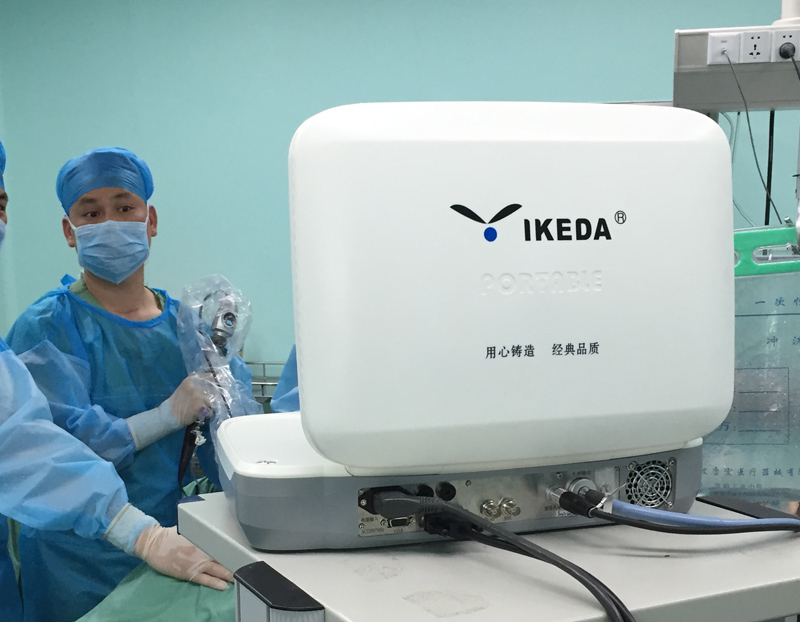"Holmium laser lithotripsy under flexible ureteroscope" only needs to pass through the patient's urethra, and use flexible ureteroscope that can bend actively to observe the upper urinary tract area, such as renal pelvis and renal calyx. The ideal method for treating refractory kidney stones is a milestone in the history of the development of endovascular urology.

Holmium laser lithotripsy can easily reach various parts of the renal pelvis and ureter through various endoscopes (ureteroscopy, cystourethroscopy, percutaneous nephroscope, etc.). The optical fiber directly contacts the surface of the stone to excite the laser. The instantaneous peak power vaporizes the stone, and finally forms fine particles and is discharged from the body. The main principle is to use the excellent cutting and gasification functions of the holmium laser, thermal ablation, and crushing of hard stones to achieve the purpose of removing the lesions.
Steps:
1. The patient needs to receive general anesthesia. After the anesthesia is successful, the lithotomy position needs to be placed, that is, the legs are separated at about 90° and the height is about 7-8cm.
2. A rigid ureteroscope is inserted from the urethra. The rigid ureter first reaches the ureter or kidney where the disease is located, and an ultra-smooth guide wire is indwelled.
3. Using the super-smooth guide wire as a guide, place the outer sheath of the flexible ureteroscope to the place where the stone is located.
4. The flexible ureteroscope enters the human body through this pre-placed operating channel and reaches the location of the stone. Holmium laser is inserted into the location of the stone through the laser channel of the flexible ureteroscope, and the stone is placed under the direct vision of the flexible ureteroscope. Completely crushed.
5. Use a stone basket to expel larger stones from the operating channel. Smaller stones smaller than 2mm will not be taken out.
Ureteroscopy is effective in treating middle and lower ureteral calculi, and some upper ureteral calculi that are not easily displaced due to polyp wrapping. However, for most of the upper ureteral calculi and kidney stones that are easy to move, it is often due to the fact that once the stones are crushed They fled back to the kidney collection system. Since the mirror body cannot be bent to adjust the angle, these stones can only be "sighed and sighed". Even if some stones are broken by luck, residual stones are inevitable. After surgery, they are often combined with shock wave lithotripsy, or The second-stage soft mirror treatment.